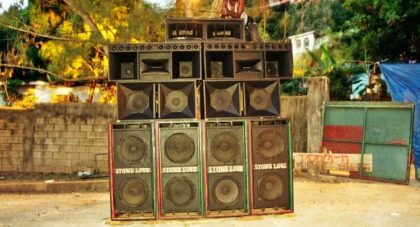Nearly two decades into their career, it makes sense that Drive-by Truckers would be releasing another live album, their first since 2000's Alabama Ass Whuppin'. Given that their catalog has grown to ten studio albums, there's a wealth of material to pull from. But 2015 has been an interesting year for Patterson Hood of DBT as well. He penned a well-regarded editorial for the New York Times over the summer in response to the church shootings in Charleston, South Carolina that gave the band a new bit of attention not seen before. Ahead of the release of their new live album It's Great to Be Alive this Friday, Patterson Hood sat down with Aquarium Drunkard to discuss the various versions of the band, the fine details of planning a live album, recording in the historic Filmore in San Francisco, his article for the Times and how a flag with Hank Williams Sr. on it may not be such a bad idea after all.
Aquarium Drunkard: You talked in the press release for this album about how much you love this version of the band. And as a fan of the band, given the member turnover, I think of this as Drive-by Truckers Mach 4.0. So how would you compare this version of the band to earlier iterations?
Patterson Hood: It's got a great chemistry, and the individual parts are all great, but it's got a really good chemistry. There's a lot of camaraderie, really close. It's like when you're in high school and you play in rock bands and you have this idealized version of how you think it ought to be. It's kind of the closest I've ever had to that band. Everybody is just smokin' good in the band. We actually enjoy hanging out and that's cool.
I guess, Mach 1 of the band - which honestly was kind of Mach 2 - but the first lineup that really toured, when we finally gelled into something we could take on the road, in 1998, '99, it was a four-piece version of the band. There were some elements of that band that I always really loved, and that I kind of missed in the later incarnations because we were stripped down, it was pretty lean and mean. We were out there in the van playing 250 shows one of those years - just a ridiculous number of shows and working really hard. But there was a good camaraderie about that. And when we did the reissue of Alabama Ass Whuppin' the other year, I was really loving just how stripped down and rockin' the arrangements were. It was really pretty primal and pretty fun. I think in later incarnations we'd gotten away from that for awhile. Everything got real crazy.
We had the line-up of the band with Jason [Isbell] which was a great version of the band and a very successful version of the band. It's the version that made a couple of our best records and really hit a lot of ground. But it also was a turbulent time. We had a hard time in that era - not just with him, but with life in general. That's when it became pretty serious and became kind of a business and we had to adjust to working with things like management and record labels and shit like that. All these things that take away time from the creative part of it. You kind of have to learn to navigate and not let it drive you crazy. And the era after that was the band trying to rebuild and become good again after losing as vital a part of the band as Jason was. And there were a lot of difficulties in that era. But we kind of landed on this and it's the best of a lot of different worlds. Everyone is really tight. It's corresponded with a time in our life that's a lot better, too. We're happy with our record deal. We have great management, a great booking agent. All the different moving parts work well. So, we're able to really focus on the good stuff, you know - being creative and writing and trying to make as good a record as we can without all the distractions. It's a pretty good time for it all.
Only the good shit. Aquarium Drunkard is powered by its patrons. Keep the servers humming and help us continue doing it by pledging your support.
To continue reading, become a member or log in.


